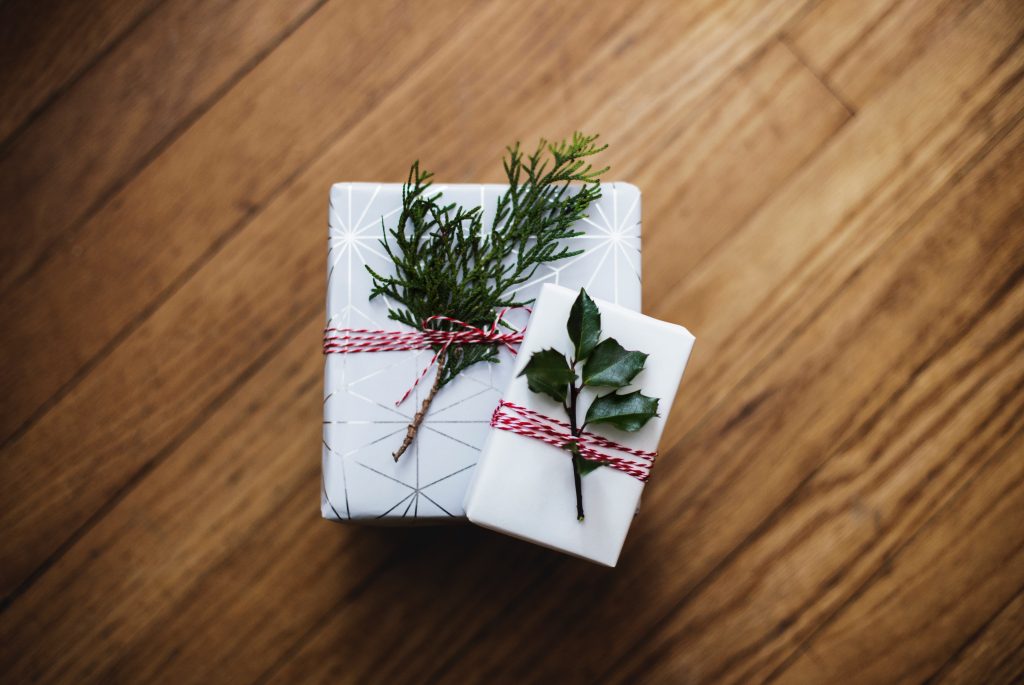Christmas vs the environment
Seasonal guidance for anyone who wants to enjoy everything a traditional Christmas has to offer, without the hefty environmental price tag.
By Emma Scott
Once upon a time, November was when my friends and I would start planning our annual Secret Santa party – the traditional exchange of cheap and cheerful gifts which provide short-lived hilarity, but are forgotten about before Boxing Day.
In recent years we’ve continued the tradition through our children, getting them together to sing carols and open another round of (usually plastic) toys and games.
It occurred to us this year that, while we host regular clothes swap parties and are all dedicated recyclers, Secret Santa has remained under our increasingly green radars. So this year, rather than buy new, we’ve resolved to exchange the toys that would usually be destined for the charity shop to make way for whatever finds its way down the chimney.
A greener Christmas
We’re not alone in wanting to make our festive season a little greener. In 2018 the BBC’s Blue Planet II series brought out the environmentalist in many of us, while this year Greta Thunberg inspired our inner climate activists.
Demand for eco-friendly products seems to be on the rise and search volume for sustainable gifts is reportedly up 118% on Pinterest compared to last year.
So, for anyone who wants to enjoy everything a traditional Christmas has to offer without the hefty environmental price tag, here is some seasonal guidance
The Christmas tree
Despite the yearly annoyance of broken baubles and knotted fairy lights, for many Christmas just wouldn’t be the same without a tree. So if you’re looking to minimise your festive carbon footprint, is it better to fake it, or keep it real?
It depends.
Artificial trees are, or course, made largely of plastic, will probably have been shipped many miles to reach stores and cannot currently be recycled. This means that a two meter artificial tree has a carbon footprint equivalent to 40kg of greenhouse gas emissions. That’s more than twice that of a real tree that ends up in landfill.
Of course, real trees needn’t end up in landfill. Many local authorities will collect them after Christmas and shred them to use in parks and gardens, or compost them.
That said, as a reusable item, artificial trees are several steps up the waste hierarchy. However, you will have to use your artificial tree for at least 10 years if you want it to outweigh the environmental benefits of a real tree.
Christmas crackers
Terrible jokes and colourful hats are as much as part of Christmas dinner as turkey and sprouts, but more and more people are crossing crackers off their Christmas lists. While paper hats and jokes can be recycled, the crackers themselves are often covered in glitter and other non-recyclable embellishments, not to mention the novelty contents; often quickly discarded plastic.
If you can’t bear to let go of this tradition there are now plenty of eco-friendly options, including making your own.
Christmas dinner
It’s not just plastic waste that’s weighing on public consciousness this year – food waste is increasingly being recognised as a huge contributor to rising greenhouse gas levels.
Over a third (35%) of Brits admit to throwing away more food at Christmas than any other time of year, collectively throwing away an estimated 2 million turkeys, 74 million mince pies and 5 million Christmas puddings.
This year, make a shopping list and stick to it, consider tinned or frozen options and have a plan to use up the inevitable leftovers.
Wrapping paper
In the last couple of years people have become much more aware of the difficulty recycling wrapping paper, and using the ‘scrunch test’ families up and down the country have discovered just how little of the wrapping paper under the tree is actually paper.
Some is actually plastic based. Add to that the sticky tape, foil and glitter – none of which can be recycled – and you quickly have a very full general waste bin. Those looking for a greener alternative should consider reusable gift bags or boxes, or even newspaper, which can look very stylish in creative hands.
Christmas cards
We’ve been sending Christmas cards in the UK since 1843 and today around 100 million single and 900 million boxed Christmas cards are sold in the UK. But as with wrapping paper, many cards come with a generous sprinkling of glitter, rendering them unrecyclable.
E-cards remain a good alternative. They’re free, arrive immediately and you avoid queues at the post office.
In fact, Mintel research suggests that younger generations are increasingly opting for electronic ways to send festive greetings. Around one in three (34%) Brits aged 25-34 think social media is an appropriate way to send greetings cards online, and less than half of those aged 16-24 (43%) and 25-34 (49%) buy Christmas cards.
There are lots of ways you can enjoy a greener Christmas, and we’ll be sharing some of them throughout December on our Twitter feed.
Pelican Communications is a specialist in the environment & CSR, food, packaging & logistics and trade association sectors and offers a range of services such as strategy, design, content creation, public relations and people development.
Contact us for marketing and communications expertise.
